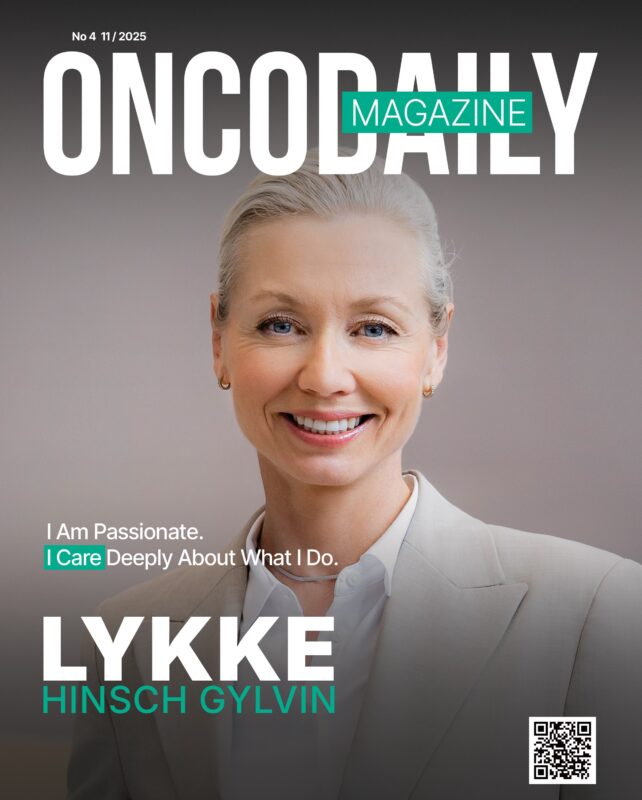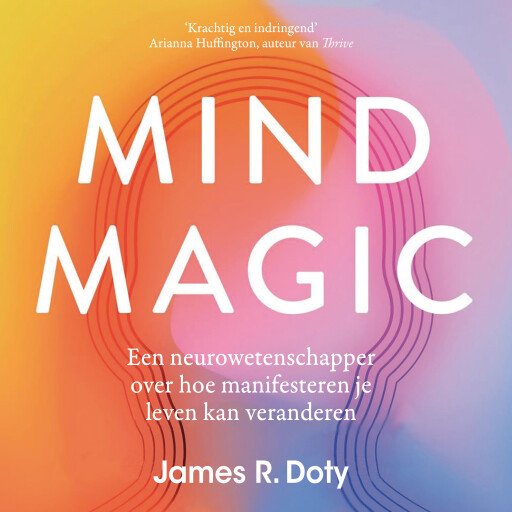The life and leadership philosophy of Lykke Hinsch Gylvin, Boehringer Ingelheim’s Chief Medical Officer
“When you bring science and humanity together, that’s when real change happens,” says Dr. Lykke Hinsch Gylvin, Chief Medical Officer and Head of Global Medicine at Boehringer Ingelheim, one of the world’s largest—and largest private—pharmaceutical companies. Her journey from a young medical student inspired by loss to a global leader driven by purpose has been defined by curiosity, empathy, and collaboration.
From Loss to Purpose
“I chose medicine because I was a relative of a chronic pain patient,” she begins, her voice steady but reflective. “And at the same time, I lost my dear cousin to melanoma when I was very young. I was very close to him.”
Those early experiences shaped her deeply. “That, combined with a remarkable biology and science teacher, made me pursue medicine—driven by a purpose to make a positive change for patients at a very early age.”
Finding Meaning in the Early Years
She remembers her medical school days vividly. “Coming in as a passionate student wanting to make a change, I realized it would take eight years before I could really touch a patient,” she recalls with a smile. “In the early years, it’s a lot of studying and reading, and you seem far from your purpose.”
What helped her stay grounded was working part-time in hospitals. “Several times a week, I worked in hospital wards, often assisting physicians and nurses. It connected my purpose to patients and made the long academic years meaningful. That connection kept me going.”
Those early lessons taught her something fundamental: that medicine is about proximity—to science, to people, and to meaning. “I learned fairly quickly what it means to have a real purpose as a doctor—or for that matter, any healthcare professional. You realize the change you can make, how rewarding it is, and how your purpose propels you forward toward the mission of changing lives.”
Crossing the Bridge to Industry
Her move into the pharmaceutical industry wasn’t planned. “I never meant to move into industry,” she admits. “I was headhunted.”
At the time, she was immersed in pain research, a field she had entered because of her family connection. “I started doing pain research already during medical school and continued after graduation—some of my early work was in post-surgical pain in cancer patients.”
That work, she says, “created a strong link between pain, oncology, and patient needs.”
When the opportunity arose to join industry, she saw it as a way to magnify impact. “I thought, let me try. And I quickly realized this was a place where I could connect science and make a meaningful impact on a much larger number of patients.”
But there was another realization—one that would define her leadership philosophy. “I found out very early that we cannot bring meaningful, innovative medicines to patients unless we collaborate. Back then, collaboration was mostly with academia; now it’s much broader—patients, caregivers, advocacy groups. We can’t do it alone. Real innovation happens through collaboration.”
The Keys to Leadership
When asked what drove her success as a leader, she pauses. “Maybe we start with my attitude toward life and career—it’s not so different,” she says thoughtfully. “I’m a very curious person. I think it’s all about staying humble, following your passion, and seizing opportunities when they come. And also trusting yourself that you can do it when they do.”
Professionally, her path has been shaped by range and reflection. “Coming into Boehringer, I could consolidate everything I’d learned—from early research to late-stage development and post-launch work, across several therapeutic areas.”
She also pursued an Executive MBA, broadening her understanding of leadership and business. But one experience stands out above all.
“In 2016, I took a year out to work alongside the Finnish Cancer Society. It was a fantastic opportunity. What really helped me grow was gaining a holistic understanding of drug development and marrying that with patient needs. I’ve been on both sides, and that perspective has helped me immensely.”
Living Across Seven Countries
Dr. Hinsch Gylvin has lived in seven countries—a journey that has shaped her both personally and professionally.
“My curiosity led me to different places,” she says. “I love embracing new cultures. That, in turn, shaped my understanding of human needs, behaviors, and motivators.”
Despite the cultural differences, she finds a common human core. “Even though we come from different backgrounds, cultures, and religions, we share the same drivers and motivations—with nuances, of course. Living abroad helped me adapt quickly, understand people deeply, and work together toward shared goals.”
It’s an insight that now guides how she leads global teams: with empathy and cultural intelligence.
The Mentors—and the Children—Who Shaped Her
“I’m a very self-driven person,” she says, “but I’ve been fortunate to have mentors and supporters throughout my career.”
Among them, she highlights “a senior leader within medicine who mentored me both at Roche and AstraZeneca,” as well as “a professional coach I’ve worked with for the past five years, who has helped me grow as a leader.”
And then, unexpectedly, she mentions her children.
“They keep me sane,” she laughs. “They help me stay true to myself and to my values.”
She pauses, then smiles again. “Both my children, although they are not within the field of medicine, are also driven to help people, and that makes me proud.”
“It has always been about people”
Asked what advice she would give to the next generation of leaders in healthcare and life sciences, Dr. Hinsch Gylvin doesn’t hesitate.
“First, recognize that in this industry, you have the opportunity to make a tremendous positive impact on human lives,” she says. “Even though I still miss being with patients every day as a doctor, I know I can make a big difference for many more people.”
Her advice is deceptively simple.
“Stay curious. Trust yourself and your abilities. And whatever you do, follow your purpose—never deviate from that. For me, it has always been about people, about patients.”
Inside Boehringer Ingelheim: A Long-Term Vision
Boehringer Ingelheim stands apart in an increasingly consolidated industry—and Dr. Lykke Hinsch Gylvin credits much of that distinction to the company’s independence.
“As an independent company, we have the luxury of long-term focus,” she explains. “That’s crucial because innovation takes time. The ability to think beyond quarterly results allows us to bring truly meaningful solutions to patients.”
But she emphasizes something more profound than structure: philosophy. “We are deeply focused on working with patients throughout the development of our medicines. It’s part of who we are.”
“We invest around 6.2 billion euros annually into R&D”
“In oncology,” she says, “we are driven by a strong purpose—to bring real and fundamental change to patients, not only in treatment but also in care.”
Her team follows the science, anchored in innovation and precision. “We focus on immuno-oncology and cancer cell–targeted therapies, and especially on smart combinations of these modalities, applying the latest technologies.”
“We have about 20 clinical-stage programs, with 10 first-in-class or best-in-class assets.”
The scale is formidable. “We have about 20 clinical-stage programs, with 10 first-in-class or best-in-class assets. Our Research & Development (R&D) investments rose to EUR 6.2 billion annually, or 23.2% of group net sales across our Human Pharma business. Our flagship programs are showing strong results, and our pipeline includes next-generation SIRPα inhibitor and STING agonist, and a very compelling ADC portfolio.”
What makes the company’s approach distinctive, she notes, is its open-innovation model. “About 50% of our pipeline is anchored in external innovation—with at least 150 partnerships and collaborations with academia, companies, and other stakeholders. That’s what allows us to take a holistic, patient-centered approach.”
“Stop Treating Cancer—Start Treating People”
In a previous article, Dr. Hinsch Gylvin wrote that “we need to stop treating cancer—and start treating people.” When I ask her to expand on that, she smiles. “I haven’t changed my mind.”
“Cancer is, of course, a serious disease,” she begins, “but behind every diagnosis is a human being. It’s not enough to look at efficacy or hard numbers. We have to see the person behind the data—their needs, their quality of life, their journey.”
At Boehringer Ingelheim, she explains, this means a holistic approach to solutions. “Meaningful change for patients goes beyond efficacy—it’s about tolerability, safety, and quality of life. And beyond that, it’s about systems of care: Are patients being screened, diagnosed, and given timely access? Are we supporting their overall well-being?”
Her message is clear: true innovation must serve both the disease and the person living with it.

Patients as Partners, Not Participants
When I ask about patient information, Lykke Hinsch Gylvin gently corrects me. “It’s not about having patients informed—it’s about having them involved,” she says. “That’s a very important distinction.”
“We involve patients at every stage of R&D,” she explains proudly. “About 90% of our trials are co-created with patients.”
That involvement begins with designing endpoints that matter. “We work with patients to identify what’s truly meaningful to them, but also to ensure feasibility—making trials less burdensome and faster, without compromising scientific rigor.”
The company also embraces emerging technologies to make trials smarter and more efficient. “For example, we use digital twins—AI-based virtual counterparts—to reduce the number of patients needed for a study,” she says. “It improves feasibility, reduces burden, and accelerates access. That’s what patient-centricity looks like in action.”
Passion and Purpose
When I tell her that passion seems to be the common thread in everything she says, she laughs. “You’re right,” she admits. “I am passionate. I care deeply about what I do.”
That passion, she adds, is what keeps her curious, driven, and human. “Life without passion would be too boring,” she says, echoing my own words back with a grin.
The Book That Shaped Her Thinking
For someone who has built a career bridging science and purpose, it’s fitting that the book she recommends does the same.
“It’s called Mind Magic by James R. Doty,” she says. “He’s a neurosurgeon who explores the science behind manifestation—the idea that you can train your brain to achieve your goals. He combines neuroscience with the power of positive mindset. Whether it’s about disease, personal growth, or career, you can train yourself to manifest your passion and purpose.”

She pauses, then adds with a smile: “It’s probably not as easy as he makes it sound—but there’s definitely some truth to it.”
In One Sentence
When asked to describe herself in one line, she answers without hesitation:
“I’m curious, opportunity-driven, ambitious, and driven by a purpose to make a real change for people in need.”
She adds, almost as an afterthought but with conviction: “And yes, passionate.”
The Next Conversation
Before I can ask my closing question, Dr. Lykke Hinsch Gylvin beats me to it. “I remember your final question you always ask— ‘Who should we interview next?’”
Her suggestion is both thoughtful and telling. “I would love for you to feature a patient organization in the oncology space. For instance, I found it truly inspiring to connect with advocacy leaders recently at ESMO. One standout for me was Marzia Zambon from Europa Donna – her insights deeply reinforced the importance of truly listening to those at the heart of cancer care. An interview with her would be a wonderful opportunity to spotlight the impactful work Europa Donna is doing and bring more visibility to the voices that matter most.”
It’s the perfect conclusion from a leader who sees patients not as endpoints, but as partners—and who has spent her life turning purpose into action.
Interview by Gevorg Tamamyan, Editor-in-Chief of OncoDaily
